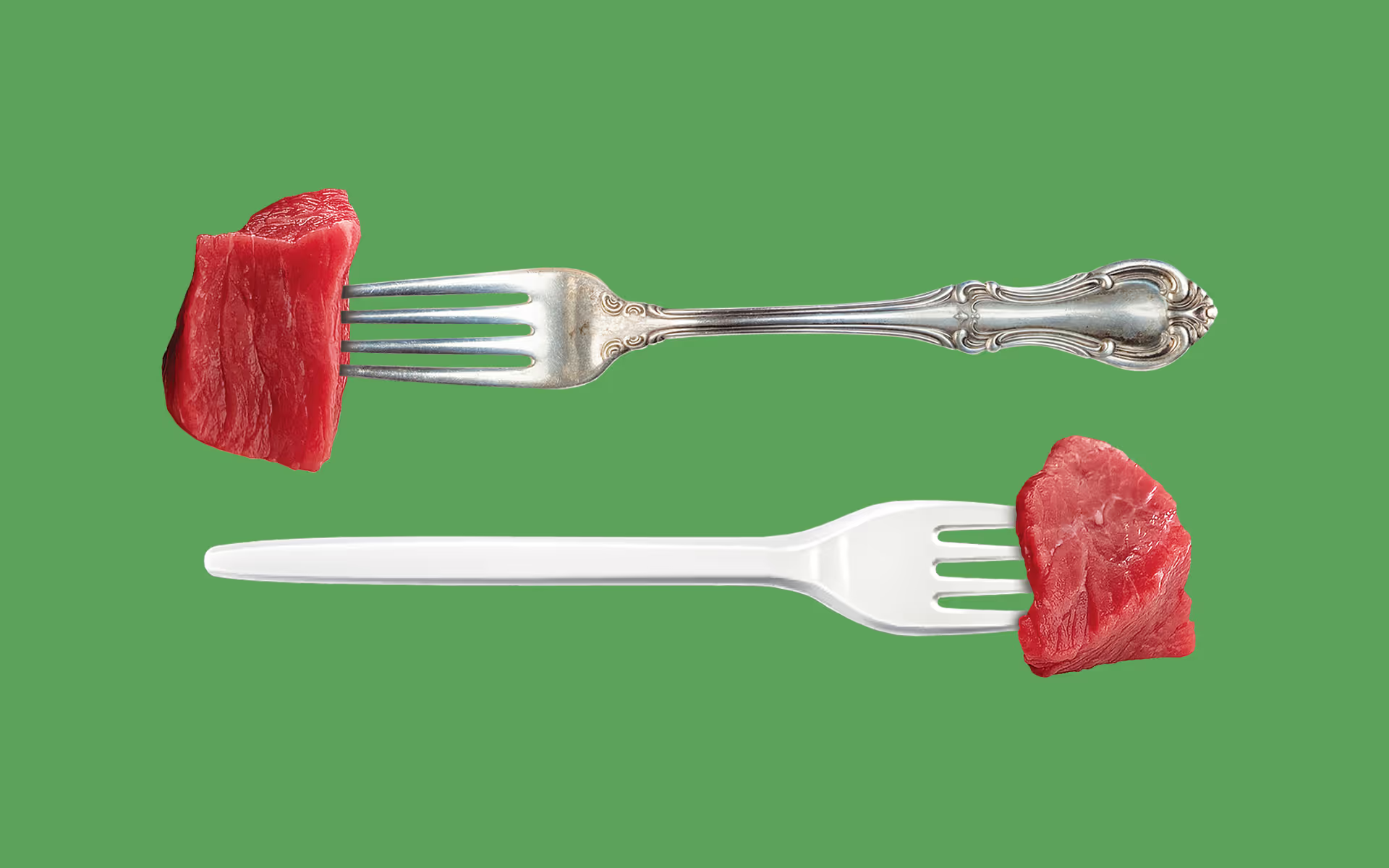When plant-based restaurants started popping up, I found the prices to be outrageously high compared to your average fast-food joints. A recurring pattern emerged as I ended up more often than not in the queue for something familiar and affordable. What I couldn’t wrap my head around was how a burger was cheaper per gram than some of the fruits and nuts that I see in the market. I eventually just dismissed the thought to me either not having enough information or brainpower to figure it out.
But as news article after article and scientific paper after paper kept adding to the mounting evidence that meat production contributes to climate change and resource depletion, my previously dismissed thoughts started creeping back in.
A lot of the goods that we use have become more affordable in the Western world, but when it comes to food, industrial meat has seen an incredible increase in affordability. This has come about in large part due to the wonders of modern technology and logistics. Consequently, almost everything else has been affected by these very same wonders, so why are the prices of nuts still breaking my balls compared to mystery meat?
Subsidies
In a nutshell, agricultural subsidies are taxpayers’ money implemented to provide affordable food for the population and aid farmers by maintaining competitiveness and providing insurance in case of crop failures. Basically, we give some of our money, hoping everybody will have reliable access to food.
Farmers and fishers receive over 700 billion dollars (possibly one trillion) annually around the globe. In the EU alone, agricultural and fishery subsidies make up 40% of its total budget.

Looking at the United States, the majority of the subsidies end up in grain production followed by livestock and fisheries while fruit and vegetable producers get the puniest share (if any). These direct subsidies to livestock farms alone don’t make animal products so affordable, it is in fact the indirect subsidies that livestock farmers benefit from the most. How so? you ask my curious friend. The answer is the low cost of feed.
60% of crops and 30% of fish catches end up as animal feed.
Because crops are heavily subsidized, livestock farmers can buy animal feed at extremely low prices which in turn lowers the cost of meat production. Adding to this spiral, crop farmers specialize their crops to cater to their biggest customer, which we all know by now who that is. That’s right, farms increasingly focus on growing crops that may only be suitable for animal feed.

Ultimately, livestock farms/corporations benefit the most from subsidies by essentially double-dipping their chips into the subsidy sauce, in the process adding unnecessary middlemen and animals to the food system.
It is here, using the momentum of your disapprovingly shaking heads, where I will add that subsidies not only affect prices but foster inefficient farming practices, which further contribute to the following factor…
Externalities
The ‘’we (better yet, someone else) will pay for that later’’ term in economic circles and the more distressing reason why our midnight drive-thrus and hotdog chow downs and weekend cook-outs got so affordable. When it comes to the factory farm and livestock farming externalities, the list reads like the side effects warning in drug ads.
- At least 14.5% of greenhouse gases annually are produced by livestock farms. The cost of unmitigated human-caused climate change will be immeasurably cataclysmic, to say the least. Some say this statistic is in fact underestimated because it doesn't take into account years of deforestation and other externalities that add to carbon emissions. Also, they were working with meat lobbies when they made that statistic putting into question the validity of the statistic. The adjusted number is said to be as high as….87%! You can read up more on this on p.155 here in the research paper
- Soil Degradation and Regression: the annual cost of soil loss is over 400 billion USD a large portion of this cost is a result of decrease in crop yields. Overgrazing is responsible for 86% of all soil degradation which could seriously jeopardize our ability to grow nutritious food in the future.
- Biodiversity loss: 60% of all forest, jungle destruction is due to land clearance for livestock while in the sea the main cause of biodiversity loss is overfishing. Depletion or complete collapse of flora and fauna populations is detrimental to total global food yield quantity, quality and security.
- Superbugs and antibiotic resistance: livestock farms tend to overuse antibiotics on their livestock resulting in resistant bacteria which is harder to combat which endangers humans, increases the likelihood of pandemics and decreases food security.
- Health: high consumption of meat leads to higher instances of heart disease, cancer, diabetes and other illnesses. The total cost of food related illness is over 500 billion a year.
- Death
Looking from an economic perspective, approximately 1.6 trillion (with a T) dollars would be saved in environmental damage if we were to stop getting our proteins from animals. To make matters worse, 83% of the total farmland is used for livestock which produce only 18% of all calories consumed. In other words, we are committing to all of the above damage to have less food now and later.

When the math is done and we add all the hidden costs, a burger would be priced nearly 3 times as much as it does now. In some scenarios, that is even a low-ball figure. It seems as if our current glut for chicken wings, ribs, and pork chop will in the long run cost humanity the proverbial arm and a leg.
The cost of the cream of the crop
But how are most of us going to afford to eat if we priced meat according to all its costs? Where will we wait in line now? Are we going to starve while bankrupting ourselves on human bird-food?! Fear not, because eating plant-sourced food is more affordable for an individual by up to 40%.

Yes, from a nutritional and financial standpoint, more vegetable centred diets actually work. The heyday (pun very much intended) when plant-based food was experimentally expensive is passing, a fact of all emerging and innovative industries. Of course, it only seems expensive due to an artificially deflated price of animal meat.
It must be said, reaching the current availability and scale of western food supply is incredible, there’s no denying that. That doesn’t mean there isn’t vast room for improvement on all fronts. Looking at where we are now, with the data we have, we must act upon it. The sooner we change the remaining ignorant economic, environmental, and nutritional (let’s not get started on ethical) practices, the better off everyone will be.
I don’t know about you, but I’d rather be biting down on a deliciously made plant burger than having all the side effects of the postmodern steak biting my loved ones and myself in the ass later.









